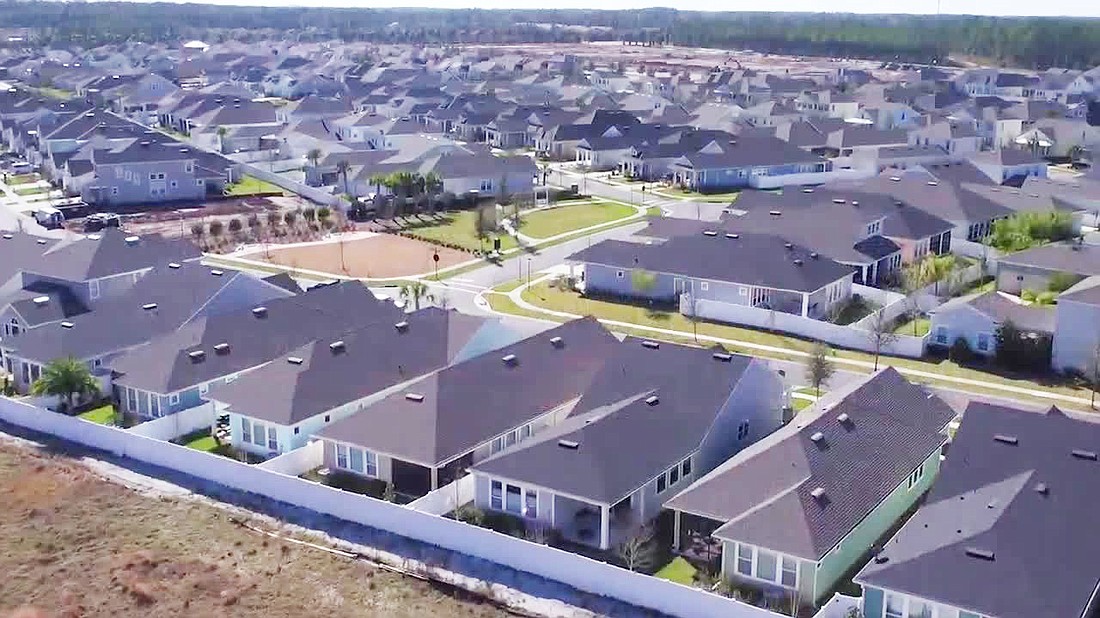
Population growth: Thousands of new residents on the way.
Ready or not, the five-county Jacksonville Metropolitan Statistical Area will add people. Data varies depending on the source, but the University of Florida Bureau of Economic and Business Research projects Baker, Clay, Duval, Nassau and St. Johns counties will grow from 1.55 million people to 1.81 million, or almost 16.8%, from 2018 to 2030.
That’s about 60 new people a day over 12 years.
A look at the increase from 2020 to 2025 shows the MSA growing by 8.3%, with the highest number of people (almost 62,900) in Duval, and the highest growth rate in St. Johns County, (15.5%, or almost 40,000 people).
Growth by in-migration typically is attributed to job prospects, the climate, the Beaches, a relatively low cost of living, no Florida income tax and “business friendly” government.
But growth also will demand planning as it challenges schools, transportation systems, health care, housing costs and availability, and jobs as more people compete for positions.
What path will Jacksonville-owned utility JEA take?
JEA starts 2020 in turmoil after an effort to consider a possible sale was halted and several of its leaders ousted.
Investigations of the utility by the Jacksonville City Council and possibly state and federal authorities also loom.
Meanwhile, issues that led to calls for change at JEA aren’t going away.
The utility predicts that energy sales will decrease 8% by 2030 while its customers increase by 35%. These projections were presented to representatives of Moody’s Investor Services Inc. and S&P Global in August 2019.
The utility also will have to find an answer to an expected $200 million in debt service liability expected from JEA’s obligations in a 20-year power purchase agreement from the Augusta, Georgia-based nuclear Plant Vogtle. JEA signed the deal with Municipal Electric Authority of Georgia in 2008.
Where the utility will call home also could be in question. A new headquarters Downtown was planned expecting a sale.
Labor: The challenge of low unemployment, retiring boomers.
Who would have guessed in 2010 that the Northeast Florida job market would be so tight a decade later that “labor shortage” was a common concern?
Florida unemployment peaked at more than 11% in January 2010 and stayed above 10% for more than a year in the aftermath of the Great Recession.
By November 2019, Jacksonville area unemployment reached the lowest level on record at 2.6%.
The low unemployment rate means employers are looking for staff.
Not all industries experience labor shortages, but skilled trades and other specialty positions are affected, as are hospitality and retail jobs where workers have plenty of options.
The needs are leading to training opportunities, especially in emerging growth areas like fintech – financial technology.
The 2020s offer another challenge: The baby boomers all will reach retirement age by the end of the decade, turning 66 to 85 years old.
They will be leaving long-term jobs and taking their skills and experience with them.
Affordable housing: As rents rise, government expected to step in.
Housing inventories are likely to shrink because of increasing demand, higher land and labor costs and government regulations.
Buyers, especially those who are low-income and entry-level, will be challenged to find homes in their price range.
Apartment rents continue to rise as investors buy existing rental properties, make improvements and increase rates.
Local, state and federal governments are expected to make policies and enact legislation regarding housing affordability.
“Affordable housing is too big and complex of an issue to be completely solved at the local level,” said Matt McCarthy with Colliers International Multifamily Investment & Land Services.
He said apartments are the focus for affordable housing development.
Developers also are looking at “infill” properties close to Downtown or in vacant pockets of land to build lower-cost housing.
Shopping mall reuse: Filling holes left by online shopping.
Vacancies challenge the enclosed shopping malls built from the 1960s to the ‘90s as consumers spend their money online and as anchor tenants close because of slow business or corporate bankruptcies and smaller tenants also lose customers.
Some mall owners are focusing on improving their tenant mix and adding “experiential” events like concerts, community gatherings and coffee houses, making their properties a community center of activity.
Others are trying to capitalize on the value of the real estate and look for other uses, such as offices, call centers, schools, medical hubs, churches, car dealerships, e-commerce fulfillment facilities and housing – or selling the land to developers.
Open-air “lifestyle” centers St. Johns Town Center and The Pavilion at Durbin Park dominate the shopping scene — and there’s more to come.